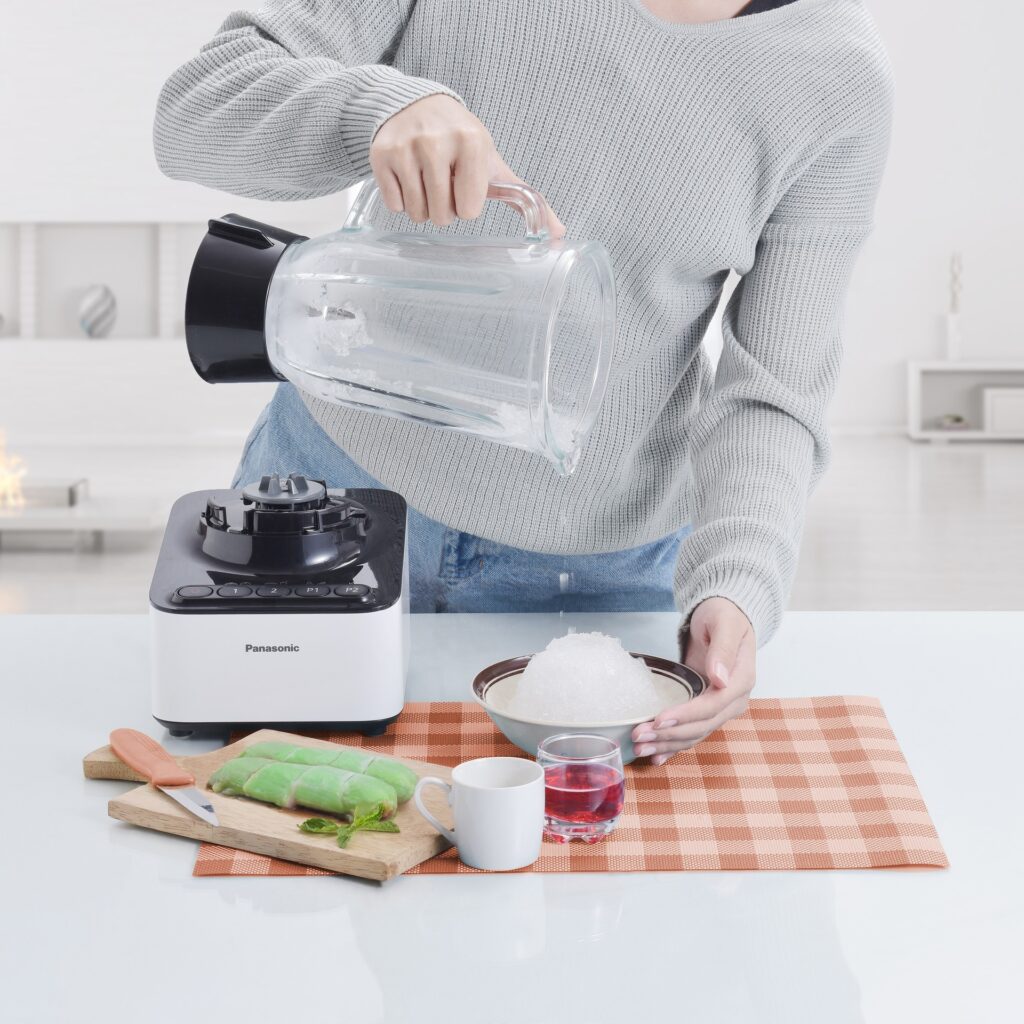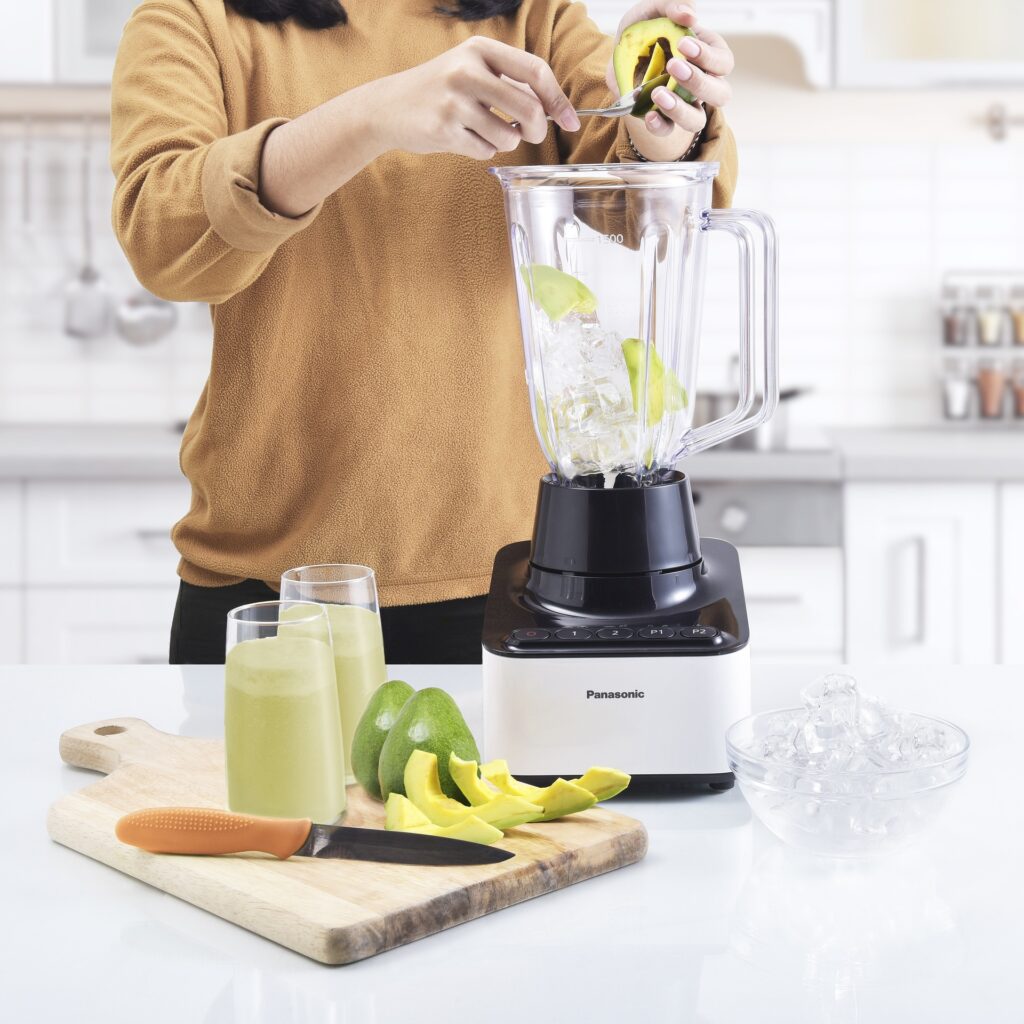Blenders are versatile kitchen appliances that make meal preparation more convenient, but their noise levels can be a source of annoyance. Have you noticed that too? In this comprehensive and informative blog post, JuicyBlenders will explore the reasons why blenders tend to be loud during operation, discuss factors that contribute to the noise level, and offer insights on the relationship between blender noise and quality. We’ll also share tips on how to reduce noise when using your blender, along with some personal experiences to help you get the most out of your appliance.
How a Blender Works
In order to better understand why your blender is so loud, let us first take a look at how your blender works. A blender is designed to mix, puree, or emulsify various ingredients by rapidly spinning a set of blades at the bottom of a container. The blender’s motor, housed in its base, powers the blades, allowing them to cut through and blend the contents. The efficiency and speed at which the blades spin are responsible for the blender’s effectiveness in creating smooth, evenly blended mixtures.
Factors Contributing to Blender Noise
There are several factors that contribute to the noise level of a blender. We will note each one so it gives you a clearer understanding as to the why:
-
Motor power: A powerful motor generates more noise as it spins the blades at high speeds. Generally, higher-end blenders have more powerful motors, which can result in increased noise levels.
-
Blade design: The design and material of the blades can impact the noise level. Some blades are specifically designed to create a vortex that minimizes noise, while others might produce more noise due to their shape or construction.
-
Blender container material: The material of the blender container can also affect the noise level. Glass containers tend to be quieter than plastic ones, as they absorb more vibrations from the motor.
-
Speed settings: High-speed settings generate more noise due to the rapid movement of the blades. Lower speed settings will generally produce less noise, but may not be as efficient for blending certain ingredients.
Blender Noise and Quality
While a louder blender might be associated with a more powerful motor, it’s essential to note that noise level isn’t always directly correlated with the quality of the appliance. Some high-quality blenders are designed with noise-reducing features or quieter motors, while others may prioritize power and performance over noise reduction.
Tips for Reducing Blender Noise
Here are some practical suggestions for reducing noise when using your blender:
-
Place the blender on a soft surface: Place your blender on a rubber mat, silicone trivet, or folded towel, this can help absorb vibrations and reduce noise.
-
Use lower speed settings when possible: Opt for lower speed settings when blending softer ingredients or when a high speed isn’t necessary for the desired consistency.
-
Blend in smaller batches: Blending smaller quantities of ingredients can help minimize noise by reducing the load on the motor.
-
Invest in a noise-reducing blender: If noise is a significant concern, consider investing in a blender specifically designed to operate quietly. Some of these are the Vitamix Quiet One Blender, Blendtec Professional 800, Hamilton Beach Professional 1500W Quiet Shield Blender, WantJoin Professional Commercial Blender With Shield Quiet
Personal Testimonials on Reducing Blender Noise
As a frequent blender user, I’ve faced the challenge of dealing with noisy blender operations, which can be quite disruptive to my family and even my dog, so I decided to check with others to find out how best to reduce my blender’s noise. I mean… I already owned a not-so-quiet blender that I absolutely loved and had no intention of getting rid of it for a quieter model any time soon.
Testimonial 1: The Rubber Mat Solution
“My blender was incredibly loud during operation, especially when blending frozen fruits or ice. The noise was so intense that it would wake up my family members in the morning, and I even received a complaint from a neighbor. I knew I had to find a solution to reduce the noise level without compromising the blender’s performance.

After researching various noise-reducing techniques, I decided to place a rubber mat underneath my blender. This simple yet effective solution absorbed the vibrations produced by the motor and significantly reduced the overall noise level. The rubber mat I used was an affordable, non-slip kitchen mat that I found at a local store, making this solution both cost-effective and easy to implement. I was so relieved!
Since using the rubber mat, my family members have been able to sleep peacefully while I prepare my morning smoothies, and I haven’t received any more complaints from my neighbors. I highly recommend trying this solution if you’re struggling with a noisy blender! It’s simple but effective!” (Claire H.)
Testimonial 2: Repurposing a Cardboard Box
“In my quest for a quieter blending experience, I came across a creative and affordable solution – repurposing a cardboard box. My blender was producing a considerable amount of noise, particularly when blending at high speeds, which made it difficult to have conversations in the kitchen.
I took a large cardboard box, lined it with foam padding (you can also use egg crate foam or even an old yoga mat), and cut a hole in the side for the blender’s power cord. I then placed my blender inside the box, which acted as a makeshift sound enclosure.

The results were impressive – the cardboard box and foam padding significantly dampened the noise level, making it much more bearable for everyone in the household. This solution was not only affordable but also easy to set up and dismantle as needed.
While it may not be the most aesthetically pleasing option, repurposing a cardboard box has made a significant difference in my blending experience, and I encourage you to give it a try if you’re looking for an affordable noise-reducing solution.” (Ivy Y)
Conclusion
Understanding the reasons behind the loud operation of blenders can help you make informed decisions about your appliance and its usage. While it’s true that some noise is inevitable, there are ways to minimize it and create a more pleasant blending experience. By following the tips provided, you can enjoy the convenience of a blender without excessive noise disrupting your kitchen atmosphere. And remember, the key to a great blending experience lies in finding the right balance between power, performance, and noise levels.
Both of these solutions have helped transform noisy blenders into more manageable appliances, allowing people to enjoy their benefits without disturbing those around them. By placing a rubber mat under the blender or creating a makeshift sound enclosure with a cardboard box, you can reduce noise levels effectively without breaking the bank. Give these solutions a try, and feel free to share your own tips and experiences in the comments below! Happy blending!





